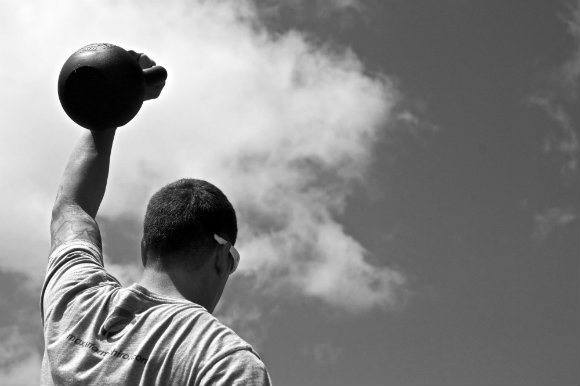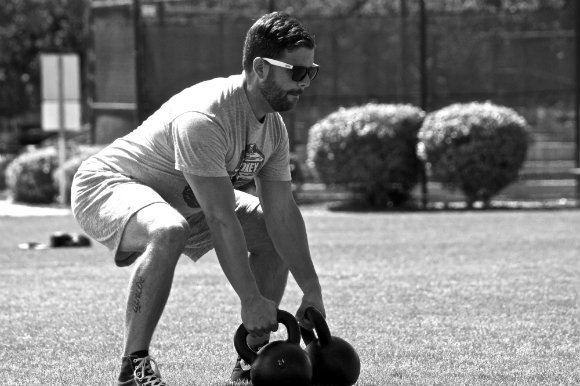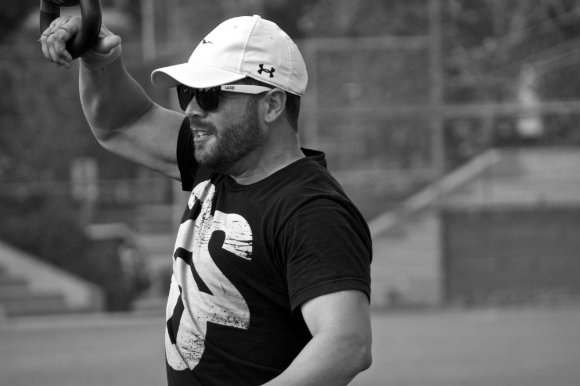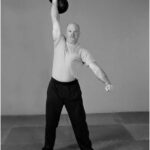There are too many quotations and clichés about time. Philosophers ponder the subject and we all watch the seconds, minutes, hours, and days tick by. One of my favorite sayings about time comes from the Star Trek movie Generations: “Time is the fire in which we all burn.”
What does that line conjure in your mind? Is it a positive or negative? Or are you wondering what on earth the Chief SFG is thinking by quoting Star Trek?
Let’s start first with the concept of “fire.” Fire can reduce some things to ashes or provide light and heat for survival. Iron is melted by the heat of a flame, but the same iron is tempered by heat. So, “time is a fire.” These words are asking us to consider that time will consume us in the end, but before then will we be melted by it or tempered by it? And how do we determine whether we will be melted or tempered?
Time, Training, and Patience
I believe that we can apply the practices of training and patience to the time we are given to determine our path. First, let me define time, training, and patience:
- Time is a construct of how we measure our experience of life. Seconds, minutes, hours, and days have meaning because we put a construct on them. We schedule our lives and our training within certain measures of time. Eight to twelve weeks would be a familiar mesocycle in periodization terms. A year could make up a macrocycle and so on.
- Training is what we do to accomplish a goal. That goal may be a half-bodyweight military press or successfully completing an SFG Certification or participating in a powerlifting meet or ______ (fill in the blank, even if it just to “be healthy”).
- Patience can be the glue that helps you transition from the early “easy” progress to the sustained march of training and accomplishments over time. Patience is defined as an ability or willingness to suppress restlessness or annoyance when confronted with delay. Strength requires patience. Power requires patience. Raising a teenager requires patience. Years ago, I came across the saying: “An overnight success takes ten years.” Do you have the patience to sustain the work to have that “overnight success”?
So, time, training, and patience—are we using them to our advantage? Let’s break this down into some components, concepts, and steps that allow us to build some patience into accomplishing our goals. Here are the basic steps, then keep reading for further detail and instructions on each:
- Pick a goal.
- Work backward from the date you’ve set for your goal to set your training time-frame.
- Do a needs analysis. Where are you now and what do you need to accomplish?
- Define your weak links.
- Re-evaluate your stated goal with your time-frame and needs analysis in mind.
- Program your training accordingly.
- Plan for detours.
Pick a Goal
This is up to you. Running a 5K, competing in your first powerlifting meet, or achieving the SFG Level I or II could be a great goal to focus on. You must also consider what you “need” to accomplish versus what you “want” to accomplish. An individual may want to lift in a powerlifting meet, but she needs to achieve an SFG Certification for her business.
Work Backward to Set Your Time-frame
If your goal provides you with a set date, like the day of a race or meet, then this is an easy step. An SFG Certification will also certainly provide a specific date, but some goals do not come with a deadline. Achieving the Simple standard from Simple & Sinister does not come with a date to be completed by, but you can set a date for yourself. Setting your own date must be done with some care and bit of realism, but once you set a goal and a date you simply count backward to set the number of training weeks/days.
Do a Needs Analysis
“If you don’t know where you are going, you might wind up someplace else.”—Yogi Berra
And that is why we set a goal/destination. But at the same time, if you don’t know where you are starting from, then any route can get you lost. Once your goal is determined, you still need to know where you are now in reference to that goal.
Want to run a 5K? How far can you run now and how long does it take you? If the answer is something like, “I walk a 5K, but have never run a 5K,” then you should plan for there to be a few intermediate goals between the initial needs analysis and the event. For example, an intermediate goal may be running the first half mile of the 5K walk. This may be the first two weeks of the programming with the next intermediate goal being running the first half mile of the first and second miles for two weeks and so on until the main goal of running a 5K is accomplished.
Want to press a half-bodyweight kettlebell? What is your 1RM now? If your half-bodyweight goal is the 44kg kettlebell and you are currently at a 1RM of a 28kg kettlebell, then we can begin to look at programming percentages, volume, frequency, and intensity to create training cycles designed to increase that 1RM and narrow the gap.
It is always better to build from success and not try to take on the whole goal at once but rather address it in “pieces.” But that is only part of the needs analysis, in my mind. Other aspects include:
- Movement Ability and Screening—I recommend an FMS screen to look for painful patterns or patterns that you have difficulty accessing.
- Lifestyle—As the old saying goes, “You can’t hoot with the owls at night and soar with the eagles in the morning.” Your lifestyle must support your goals, rest, and recovery.
- Time Constraints and Commitments—Scheduling yourself for two hours of training a day when you work ten hours, sleep eight hours, eat two hours, and have four hours of school work because you’ve gone back to earn an online MBA means you have to create two hours that don’t exist. Or you have to adjust the schedule to allow for an hour of training out of the four hours of school work.
- Family—Accomplishing a goal should not hurt your family and relationships. In an ideal situation, it should improve them. Scheduling yourself for two hours of training during family dinner time is a sure way to cause stress and strife.
- Nutrition—It is hard to optimize performance when the fuel you’re putting into your body doesn’t support it. Jet engines require jet fuel.
- Coaching—You may need a running coach to help you with the skill of running. Or you need an SFG to assist you in learning the skill of swinging a kettlebell.
Once you do a proper needs analysis, it may turn out that the roadblock to your goal is related to a lack of sleep and recovery, not a technical flaw or programming issue. Needs analysis should include many aspects of life, training, and recovery.
Define the Weak Links
What did your needs analysis tell you? Do you want to run a 5K but a movement analysis discovered you have an ankle restriction? Do you want to press a half-bodyweight kettlebell but an assessment has shown your shoulder mobility is lacking? If a movement issue is found, then take the time and get the proper help in addressing it before launching into a training program. This will be time well spent and can make a tremendous difference in succeeding in the longer term (remember the whole “patience” thing?)
Weak links can happen outside your movement, too. Are you grabbing fast food for breakfast and lunch and going out for drinks in the evening, but trying to support five days a week of training for an SFG Level I Certification? How do you think that’s going to work out? If the SFG Level I is your goal, then your nutrition will need to be priority.
Are you only sleeping four or five hours a night but trying to prep for that 5K? Sleep needs to become a priority for you. Recovery is important to making forward progress and preventing injury.
What did your needs analysis tell you and what weak link needs to be addressed?
Re-evaluate the Goal and Time-frame
If after your needs analysis and examination of your weak links you realize you need three months of work to get ready to begin the running for a 5K training program, then you’ll need to bump your race date back three months. Find another race and sign up for that one instead.
If the needs analysis and weak links sent you down the path of needing to achieve the Simple goals with a 20kg kettlebell before moving on to the 24kg kettlebell, then you need to accept that and work toward each intermediate goal along the way to your ultimate goal.
Patience is needed. Exercising patience and mapping out your intermediate goals actually shows commitment to the big goal and wise planning for what is more likely to be a successful program. You just cannot allow this to become a delaying tactic by continually finding a reason to push back a goal or time-frame on a whim.
Plan Accordingly
Fit the plan to your life and plan accordingly. If you do shift work, like three twelves, then on those days your training may only include soft tissue and mobility work. You’ll be better off using other days for your training time.
Do you prefer to work out in the afternoon or evening, but work and family obligations regularly occur during those times? Then you need to adapt to a morning exercise routine so nothing can’t prevent it. This may also mean deleting an exercise or adapting a part of your program that doesn’t fit into a morning routine. So, plan ahead and plan accordingly.
Plan for Detours
As military strategist Helmuth von Moltke stated in the mid-nineteenth century, “No operation extends with any certainty beyond the first encounter with the main body of the enemy.” Which has been shortened over the years to: “No plan survives contact with the enemy.” Or as Mike Tyson said, “Everyone has a plan until they get punched in the mouth.” The “enemies” for you are the potential roadblocks, detours, and life events that will “punch you in the mouth.”
Headed for a snatch test goal, but your shoulder starts to hurt? Working toward a 5K but your knees are getting painful? Does a shift change at work mean you have to completely revamp your program? Welcome to this thing we call “life.” Go head and set a date for your goal, but be aware that any number of events may force a recalculation of your timeframe. Being in denial and failing to adjust to the realities of life can result in problems achieving your goal or an increase in your risk of an injury.
Because pain is not to be ignored. Period. It is not to be ignored and you should seek a medical professional you trust to work with to address the acute issue as well as any underlying issues. At this point, you should also have your plan re-evaluated by a fitness professional who can help you refine your plan based on your new circumstances. Sometimes it is as simple as deleting a couple of exercises or rotating the intensity or volume in a different manner. Or it could be as simple as changing your running path to avoid repeating the same slope of the road or turn directions. Sometimes it is something you wouldn’t think matters and having the insight of a professional can make that difference.
Conclusion
“Patience is a virtue” might be one of the most famous quotations on patience. Patience applies to everything—from the timing of a swing or push press to being able to accept a detour due to injury that adds months to your program.
Patience.












Great article Chief!
Great article! This is a very timely post for me as I’m currently experiencing time constraints about my training with some new time requirements at work. It feels frustrating, and it’s a good thing I stumbled upon this article about growing patience for your training. I haven’t done a thorough reevaluation yet, but my preliminary analysis tells me I’ll have to scale down my training goals a bit. Again, it’s frustrating, but I guess that’s how you practice patience.
“Genius is eternal patience.” – Michelangelo
Excellent,as always!
I love it Brett, Thanks for that! Never be ashamed to reference Trek! It’s a thinking man’s show. There aren’t many others that deal with philosophical and moral questions on a regular basis. More Trek Chief!
An excellent article, Chief, thank you.
Well this article hit the nail on the head. I needed to hear the truth. I am struggling mentally with progressing as I fell into a slump and my workouts have become here and there rather than consistent. This week I am changing that. I signed up to do Spartan Super in a month. I know I can do it but I must stay consistantly this month.
Great article. I am dealing with the after effects of some poor planning and lack of patience. I trained very hard for a SFG 1 cert that took place in April but I was a classic case of too much too soon-3 months was not enough prep and I ended up with a nagging elbow injury.
I am slowly rebuilding and savouring every minute of working on my patience, skill and fitness. I will certainly earn my stripes-without shortcuts this time.
Great article. Too often do we forget the importance of patience ….
I, too, always use that quote. But it must be said in Malcolm McDowell voice. Great article!
Thanks Chief, patience and excellent coaching are 1A and 1B in my experience. Great piece!